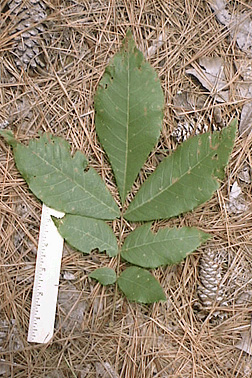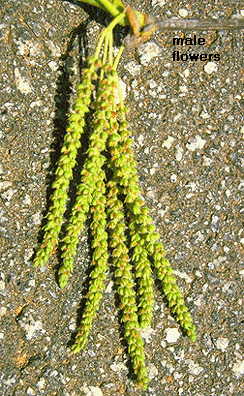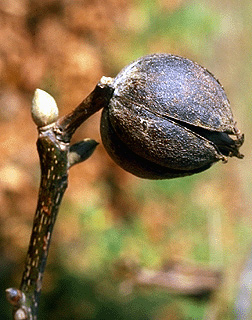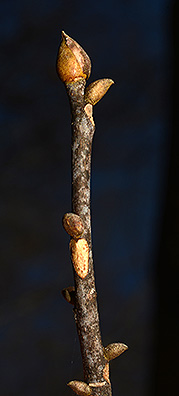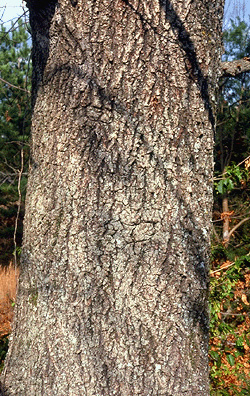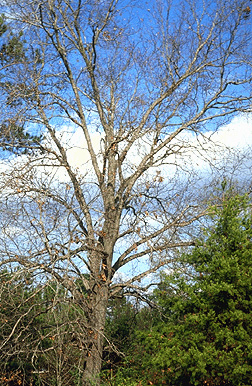 Virginia Tech Dendrology
Virginia Tech Dendrology
sand hickory Juglandaceae Carya
pallida (Ashe) Engl. & Graebn.
![]()
![]() symbol: CAPA24
symbol: CAPA24
Leaf: Alternate, pinnately compound, 5 to 9 serrated, ovate to lance-shaped leaflets, most commonly 7, 7 to 14 inches long, upper leaf surfaces covered with silvery scales when young, lower surface very pale and pubescent, rachis scruffy fuzzy.
Flower: Species is monoecious; males flowers are yellow-green slender hanging catkins 2 to 4 inches long; females are short and in small clusters at branch tips, appearing in mid-spring.
Fruit: Pear shaped to nearly round, 3/4 to 1 1/2 inch across, thin husks split to the base, husks have yellowish scales when young, dark brown when mature, nut is thin shelled, ridged and angled, sweet, ripens in early fall.
Twig: Moderately stout, slender when compared to other hickories, reddish brown to dark brown with lighter lenticels, leaf scars three lobed; buds ovoid with scruffy hairs and silvery scales.
Bark: Young trees gray and smooth later becoming dark gray, ridges and furrows form a rough diamond shaped pattern, ridges rough and scaly.
Form: Medium sized tree with a straight trunk, dense crown, and lower branches often hanging, reaches up to 80 feet tall.
Looks like: bitternut hickory
- pignut hickory
- red hickory
- mockernut hickory
Additional Range Information: Carya pallida is native to North America. Range may be expanded by planting. Download the full-size PDF map.
More Information: Wood
External Links: USDA Plants Database - USDAFS Forest Products Lab
All material 2025 Virginia Tech Dept. of Forest Resources and Environmental Conservation; Photos and text by: John Seiler, Edward Jensen, Alex Niemiera, and John Peterson; Silvics reprinted from Ag Handbook 654; range map source information
